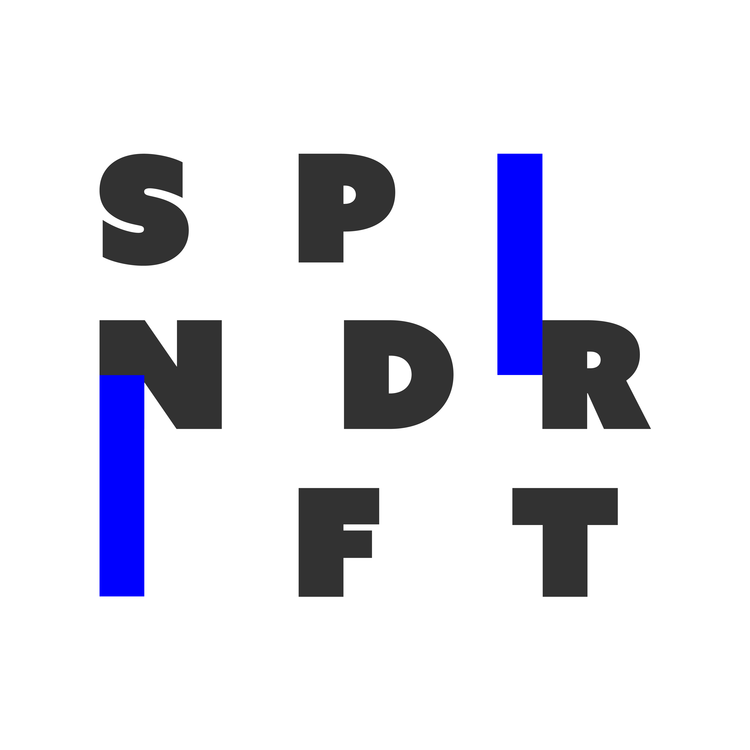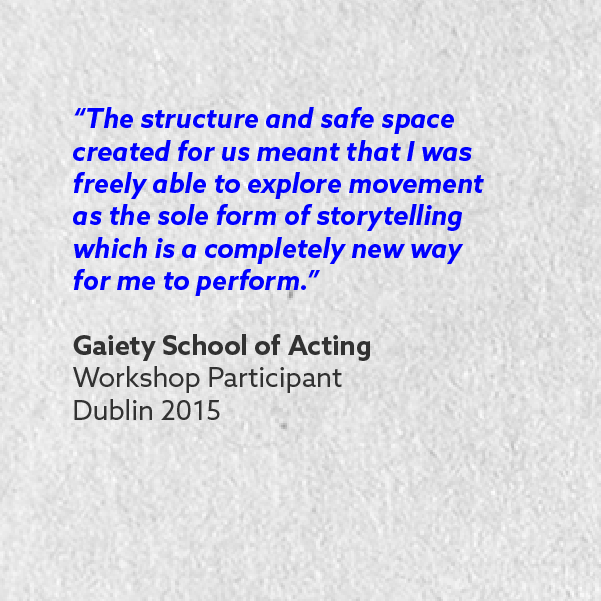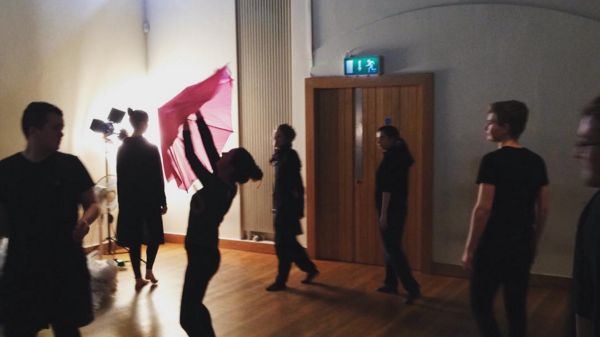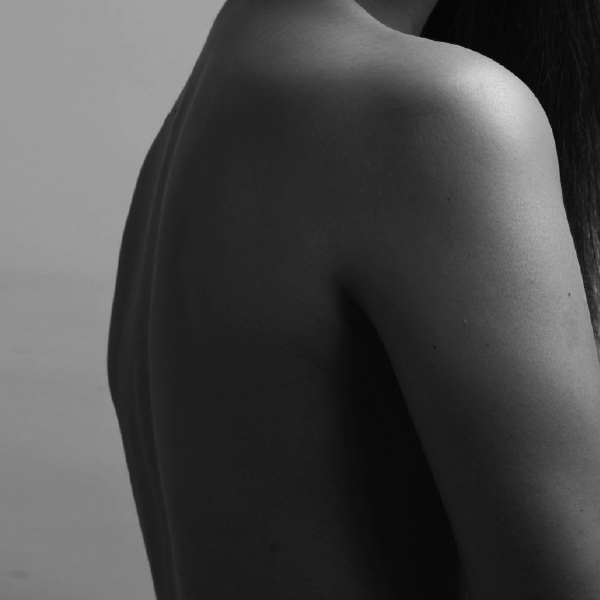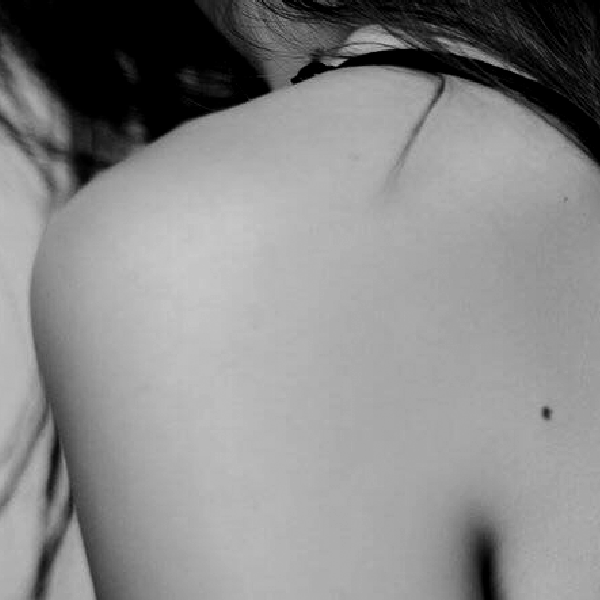We continue to share our material from our most recent production: "Carroll: Berserkur" with this short fragment from actress Hrefna Lind Lárusdóttir and filmmakers Louis Crevier and Marco Schott.
FILM CHAPTERS
We wanted to share with you Sólveig Eva's recent collaboration, which recently premiered at the Nordic Film Festival New York.
Eight (chapters) between friends and lovers as their relationships build, break down or stand completely still. Honourable Mention at the Nordic International Film Festival, New York "A fun and completely unique way to portray relationships."
TINFO
VIDEO OSLO WORKSHOP
We are extremely happy and inspired after our workshop week at the Norsk Skuespillersenter in Oslo. Meeting new performers with new ideas, qualities and attitudes gives us a push to new directions, unknown before each experience.
We are excited to publish our new video about The Performer and the Self workshop, accompanied with our commentary and reflection on the workshop and the Spindrift Ethos.
Enjoy!
– Anna Korolainen
SPINDRIFT IN OSLO
Tomorrow, all of the Spindrift members will be in Norway for our workshop The Performer and the Self at Norsk Skuespillersenter, sponsored by Evropa Unga Folksins.
Spogo, our nykur/ näck/ näkki/ nøkk/ nekker water creature, with a local friend
FRIDAY NIGHT RESEARCH
As we are researching and preparing for our trip to Oslo, we thought we'd share this inspiration and reminder for the performer to dare to relax, trust, soften and explore the gentler parts of the his/her nature.
“[The actor] feels lost without the tension on which he has relied, because this tension was part of his emotional make-up and his way of committing himself to an audience, and perhaps of convincing himself.
Tensions and limitations always come from a lack of trust in yourself: either you are over-anxious to communicate or to present an image, or you want to convince an audience of something about yourself.
An actor has to find what means he can rely on to communicate to his audience, that is part of the craft, but if he holds on to the same means to find his energy and truth he then becomes predictable. He fixes, and what started as something which was good can end so easily as a manner - the same way of dealing with a situation. An actor with an interesting voice who uses it well can still end up with his audience knowing how he is going to sound, so there is no surprise. This has a lot to do with lack of trust, because it takes trust to start each part with a clean slate, as it were - in other words, with no preconceived ideas of how it should sound, no holding on to the voice that you know.
It is only by being in a state of readiness that the voice will be liberated.
It takes time to believe that freedom works.”
Have a great weekend!
- Sóla Eva
Q&A WORKSHOP
THE PERFORMER AND THE SELF
Who are Spindrift?
We are an all female Nordic theatre company who work from the performer's curiosity about life and human behaviour. We devise original performances from what we find strange, intriguing or questionable within society. Recently we've been focusing on social taboos. We wonder why these seemingly natural sides of ourselves have been repressed, and whether we can release, observe and play with them within a theatrical context.
What is this workshop for?
1) New Discoveries
We love working with performers from outside the company. There are always new findings when working in new locations, with new personalities, with different movement qualities, genders and nationalities.
2) Developing Carroll: Berserkur
We are developing the technique we used for our performance Carroll: Berserkur, where characters from Alice's Wonderland were cast from exaggerated sides of our performers' personalities. We viewed the scenic design as an extension of the character. We worked with questions about society and taboos, and invited the audience to play with us.
3) Developing our own style
Through these workshops we are developing a performance technique which we've given the name: Stylized Truths in which the performer exaggerates and makes artistic choices from truthful findings of his-/herself.
The performer is encouraged to work from his/her own experiences, unique body and imagination. We encourage personality and artistic ownership within their theatrical expression, and we work with autobiographical storytelling. For this way of working it is important to remember lightness and irony. When the performer finds something he/she needn't be traumatized with the idea that this finding sums up their whole being: It's just a playful exaggeration of ONE side for performance purposes. Trust us, there's plenty more to you!
What is the aim of your exercises?
To create a tool for performers to rediscover their ever-changing instrument throughout their careers, as well as being a way to devise characters, scenes and entire performances.
We want to empower the performer’s personality and help them work from their uniqueness.
We want to empower the performer's trust in their own artistic choices, and their sense of ownership.
“We are focusing on the creation of a feminist training practice, where the whole range of emotions and movement qualities is explored with no value judgment, because we believe the entirety of the human body and experiences has theatrical potential.”
Hallveig and Henry testing our exercises in Scotland
How did you come to this practice?
We had all experienced, in one way or another, how the traditional structure of acting classes is hierarchical. Where the students compete with each other for praise or attention from their leader, often creating a preference for larger, more aggressive and louder qualities.
We felt that it was more difficult to captivate with tender, soft, quiet, gentle qualities as we’d rarely had the space to explore it properly in our own training, without feeling the pressure to change into something bigger or more tense. This had created bad habits out of fear of not being interesting enough.
Anna Korolainen warming up in Dublin
We wanted to give ourselves the space we needed to practice them, to really learn how to make them work, and find out what else we might have missed.
We wanted to create a space where each performer could explore and share without having to feel the pressure of a competition.
Lastly, we simply are very intrigued by the human mind, personality and identity, with its depth, contradictions and constant development.
“We wanted to emphasize that the whole human instrument has to be explored and played with, as the characters we play have all of it. ”
Tell us about the structure of the workshop:
Anna leading participants
We wanted the performers to experience different ways of creating a character from themselves, and then give them an opportunity to devise scenes from these new characteristics.
We worked with devising from:
- Own imagination
- Inside-out
- Outside-in
What is physical theatre?
All our experiences originate in the body. It is our vehicle through which we experience the world. As actors we want to explore all the different things that make us who we are and how we behave as individuals and groups, and taking it back to these very basics of exploring the performer's body is one way of doing that.
All theatre is physical. Sometimes it includes impressive stunts and acrobatics, but sometimes just the presence of a body that is being experienced (seen, felt, smelt and heard) by an audience member.
We at Spindrift describe ourselves as a physical theatre company because:
- We are analyzing and exploring movement and its meaning for storytelling.
- We explore the performer's inside-out and outside-in access to his/her emotions and character creation.
- We explore the relationship between the body, senses and the space.
- We explore the difference between the performer's inner experience and the audiences' external experience of the same thing.
- We are actively training as a company to broaden and understand our physical instrument, and sharing our findings through workshops.
- We are actively exploring innovative ways to include the audience in the physical space.
New York Research and Development participants
Tell us about the Physical and Vocal Preparation
Anna Korolainen:
Every performer recognises the importance of a good warm up. However, I have often felt like we as actors run through the warm ups blindly, aiming towards physical endurance and impressive vocal expression. With Spindrift we have tried to create warm up structures that enhance the performers' presence and respect of one another. Naturally we have also borrowed exercises from the practitioners that we have worked with, but tried to push them into a direction that serves our aims and ethics as a company. We ask our performers and workshop participants to have their focus both inside and outside of themselves, checking in with their bodies and minds whilst staying connected to and supportive towards their partners.
We are continuously shaping our Grotowski-based physical preparation towards a direction, where the performers don't only execute strenuous physical movements, but warm up the room and share their energy with their partners. Like in yoga, physical training is not about the concrete outcome or competition, but about presence and precision in each action.
In our vocal training, we often start from the places that we feel insecure of. Vocal training can be exposing and make one feel very vulnerable, and we like to embrace those "dark places". Actors are constantly bombarded by judgements of "not having the ear for music" or "not having a strong enough voice". With Spindrift we aim to free our performers from value judgement when speaking, voicing or singing, and bring the attention to communication and connection with the partners. In everyday life people communicate with one another regardless of one's range, diction or vocabulary when speaking in one's second language, and we are aiming to bring the same attitude to our vocal exercises. Each vocal quality is interesting, and the softer and more subtle ways of speaking can flourish side by side with the loud shouts and projected scales.
Tell us about the Illustrated Self-Perception
Julia Johannsdottir:
For us the stage is not bound to one specific art, we aim to build bridges across disciplines. By this we mean both in our performances and in the rehearsal and devising process. This exercise, in the beginning was aroused from Julia´s experience working with young children. In the kindergarten the children were asked to draw a self - portrait ones a month. The teachers would ask the children questions about the drawings and write them down. This was one way for the children to express themselves on their journey of self - discovery. This gave the tutors and parents a great opportunity to get to know their children and watch their communication development, their drawing development, language development and more.
What interested Julia the most was how the children described their drawings. The stories the children would tell, and all of them were about their personal experiences. Even though the drawing was the typical “potato head” without a nose and maybe few dots here and there, the children were able to tell a whole story about their drawing. Then Julia noticed the stories often had in common how the children described the environment, even though it wasn´t really visible in the drawings.
We started using this way to express ourselves whilst devising Me…Whilst being humane! and found it extremely useful as a source of material. For that project we were working with the concept self and identity from different angles and this way we found great moments and personas and got information about each other that we believe we wouldn’t have other wise.
For Carroll: Berserkur we use plants as subject for the drawings, asking that you imagine yourself being a plant. We focus on the environment because what is interesting is that plants are completely dependent on the environment, they are 100% product from their environment. Plants have great characteristics, which can easily be identified with and played with. These characteristics are very open to own interpretation and developments. The environment and the plants characteristics give information to devise from in relation to an individual within a society and the environment we thrive in and create around us. Here we find an opportunity to devise both characteristics and sources of material in the environment for the stage design, costume design and even sound design, which, like said before, we like to devise simultaneously. From the environment we receive great information about the character, as if it is extension of the character. This gives a chance of playing with opposites of the character and showing his or hers different sides through the environmental design.
Drawings from workshop participants
Tell us about Projected Identity
Henrietta Kristensen:
In our every-day existence we are constantly receiving information about our social surroundings, and how we are perceived by our surroundings. Whether or not we are conscious about it we are always using information from the outside to define what is inside ourselves. In fact, we wouldn't be able to define ourselves at all without this external information. In other words, we are mirroring ourselves in other people, and what we believe other people see us as. Because other people's opinions of us (as true as it can be coming from our own interpretation) inform our choices and behaviour and affect us so greatly in our everyday life, we feel it is an enourmously fascinating area to explore both as performers and as human beings.
These so-called Projected Identities can make us learn a lot about ourselves, and is a fruitful gateway to interesting character explorations.
Tell us about the The Past Self
Julia's costume for Carroll:Berserkur, designed to help exaggerate the walk she found in discovering her Past Self as a teenager.
Because we are so passionate about identity and its creation and development, this exercise is one we are very fond of. We love the fact that our personality and identity is ever-evolving and can't be easily defined due to its complexity and ever-changing nature. We can define ourselves differently today from yesterday and that is completely natural. We are one thing today, as well as the million things we have left behind. We are completely made up by our past selves as well as our present self and our idea of our future self.
Looking back at our past identities in a safe and comfortable way can give us an insight into the complexity of a person, and be a useful tool in the process of learning about a character, or indeed creating a character.
We have all been the grumpy and selfish 5 year-old wanting the toy in the toy shop, but we are not necessarily this person at the age of 31, 45, or 62, but we can't discard the fact that this child is very much a part of our current being.
Tell us about the The Objective vs Subjective Body
Eva Solveig:
The exercise The Objective vs. Subjective Body explores a subjective from-inside-body-out view on the physical reality surrounding the performer's body. The aim is to train the performer's sensitivity for increased receptiveness/creative inspiration from elements such as scenic design, costume, audience's presence and fellow actors. Like learning how to taste wine or coffee through acquiring the sensitivity and listening it requires.
In addition to tuning his/her instrument, the performer can use this exercise in two ways: Playing with no end goal to find new movement/vocal qualities that can become characteristics or a way of speaking a text, without imposing pre-existing ideas. Or, if the performer knows what he/she want to feel for a scene, it can be found through exploring the space and developed into a gesture that helps release the emotion.
Like most artists, I have had to train more confidence in my choices. A way to stop second guessing myself came through realizing that:
“I am the only one in the world with an inner access to my physical sensations. No one can argue with what I am feeling as an individual.”
If something feels a certain way and I honestly interpret it as such, it's true, it's real. And so we started exploring sensations in the space, different ways of touching, different applications of weight, different tensions, movement qualities, and the very important difference of isolating when the performer's body was giving and when it was receiving.
The exercise also trains the performer to notice and take on another body's movement and sensations in order to perform them and make them his/her own. The aim is also to discover new movement and vocal qualities. We also enjoy finding characters from objects and architecture: what would this chair stand/sound like if it were a person, or an extension of my body? This nurtures a curiosity for the space, and when a character originates in the scenic design the performer has a useful tool to reaffirm his/her character if it ever starts slipping.
Example of objects we used for Carroll: Berserkur were eggshells, keys and a fishing net.
Environmental Experimentation
Here the performers devise with their characters, objects and soundscape.
We like creating the scenic design from characters, developing both simultaneously. We believe this helps the actor's inspiration and grounding while performing, and helps the audience's visual experience.
A picture from Hallveig Kristín, our scenic designer, for Carroll:Berserkur where we simultaneously worked with character creation, objects, space and audience integration in the devising of scenes.
What’s next?
This journey began in January 2014, when we devised together as a company in Theatre Delicatessen, London.
From there we led a Research and Development workshop at Rose Bruford College's Symposium Week in 2014 and staged a small R&D production at Drayton Arms Theatre in London.
After that we received a grant from Evropa Unga Folksins and Reykjavik City, enabling us to devise a full length large scale production of Carroll: Berserkur at Tjarnarbio, Iceland in 2015.
From there we brought this workshop, The Performer and the Self, to the Royal Conservatoire of Scotland and the Gaiety School of Acting in Ireland.
Our next visit will be the Norwegian Actor's Centre in Oslo in February, which will conclude this R&D period.
We have a few ideas for our next full length performance, and we will discuss ways of developing our technique further based on our findings and feedback from The Performer and the Self.
We are also at the beginning stages of creating a workshop where we simply explore an audience's perception of different movement qualities, and developing a new workshop where we explore the relationship between the body and two-dimensional spaces as well as three-dimensional spaces, and its potential for theatre practice.
TRAINING FREE OF VALUE JUDGEMENT
“Be dynamic, strong, interesting!” That is what we as actors keep hearing throughout our careers. We hear it so much that finally it becomes our truth, something to aim at and to set as a goal in our careers. We push and tense and rush and squash our partners in order to get the most attention from the director, or whoever may be able to look at our work.
Have we ever thought that those adjectives may not be something to aim at? Have we ever thought that being weak is not a negative thing? What if trying to be interesting is not interesting at all?
I started questioning this mindset after several events in my training and work, where I tried to push through to be the toughest, in other words to please my director, or an imagined outside eye who I meditated lurking in the corner of a rehearsal room.I went through a vocal chord injury, constant pain and tension in my body and finally through something we can call an artistic breakdown, where all I believed in in theatre seemed to harm me, and my own work was turning into a violent and hurtful thing.
I started reflecting upon the stance we take when evaluating actor’s work. It seemed to me that the qualities regarded traditionally as masculine, were preferred over the feminine qualities. I had been training in a singular world, where a big part of me was considered bad by the public opinion, myself included. This is not to say that as a woman I am naturally a feminine being, but that we seem to disregard half of the potential we have.
Inspired by this idea I started exploring feminist poetics and found Hélène Cixous’s work about the binary oppositions. She briefly explained, how our system of thinking forces the feminine qualities to an inferior position, and raises the masculine qualities above them. Also, how our whole language and thinking consists of two counterparts: the good and evil or more precisely: the masculine and feminine.
This quote from her book The Newly Born Woman really stayed with me: it explains simply and precisely, what is wrong with our thinking:
Where is she?
Activity/passivity
Sun/Moon
Culture/Nature
Day/Night
Father/Mother
Head/Heart
Intelligible/Palpable
Logos/Pathos
Form, convex, step, advance, semen, progress.
Matter, concave, ground – where steps are taken, holding- and dumping-ground.
Man
---
Woman
Through dual, hierarchical oppositions. Superior/Inferior. Myths, legends, books. Philosophical systems. Everywhere…
From this moment on I have started to actively train myself to see the actor’s work differently: not as a fight or a war where I need to prove to be tough, but as a place with multiple opportunities, where different qualities can play together and not replace each other.
I am also training my eye not to judge other performer’s qualities to favour the masculine, but to understand the beauty of soft, gentle, weak, subtle and tender.
In movement, the round shapes and gliding qualities can be extremely beautiful and the indirectness win the directness with its multiplicity and its unpredictability.
Also in vocal training, the key in producing sounds from our unique human body is to listen, not to be the loudest. Putting this understanding in practice takes a long time, and requires a real will of changing the aesthetics that are currently in use.
Spindrift Theatre has taken this point of view onboard, and we aim to embrace the multiplicity of the actor’s work, with all its different qualities regardless of their gender-relation. This approach is present in our workshops and directing, as well as our individual work as actors. We hope to open up new possibilities for the actors, and to make the silenced parts of our voices and bodies to speak.
- Anna Korolainen
#MYTABOO
Confessions.
“I enjoy the different sounds of my pee. I call it ‘vagina’s music’”
““I’m scared if I work less my partner won’t love me.””
We work from the performer's curiosity about life and human behaviour. We devise original performances from what we find strange, intriguing or questionable within society.
And so: for Carroll: Berserkur we asked our audience and creatives what sort of restrictions they experienced in their lives, what sort of things they don't share as they're considered taboo or socially unacceptable.
We will be posting these treasured findings on our social media through a series of illustrations by Sólveig Eva through the hashtag #MyTaboo, as we're reaching the end of our #EvropaUngaFolksins Research and Development period. What's your confession? Submit anonymously and you might find it featured as an illustration.
“I used to put lemon juice on my face in hope to get rid of my ugly freckles.”
“I shower in my underwear.”
NEW YEARS THROWBACK
Just a little New Years inspired throwback to the place we met, Rose Buford College where we studied European Theatre Arts together.
Photo credit performer/artist Johan Bark.
- Bergdís Júlía Jóhannsdóttir
LEAVING DUBLIN
Spindrift Theatre is currently sitting at Dublin Airport discussing discoveries made from our work with talented acting students of Gaiety School of Acting, Dublin Institute of Technology, Bull Alley and Inchicore College during the past three days of The Performer and the Self.
We're excited about the research material documented by filmmaker Louis Crevier which we will share with you soon as a video insight into our work.
We thank our students for their generosity and rigorous work, both in the individual exercises, group devising and sharing of their individual final pieces. We are incredibly inspired by the work we witnessed those three days. We thank for the warm and helpful feedback they took the time to give us upon the completion of their work with us.
We send a warm thank you to our set designer Hallveig Kristín Eiríksdóttir who joined our company once more with intriguing research and exercises for the actor's character building through different materials, objects and the performance space.
- Sóla Eva
IN DUBLIN
Preparing tomorrow's workshop The Performer and the Self for Acting students of: Gaiety School of Acting, Dublin Institute of Technology, Bull Alley and Inchicore College.
SELF, SOCIETY AND IDENTITY INSPIRATION
Inspired by artistic explorations of the self, society and the individual, we thought we'd share with you the performance Sólveig recently participated in by artist Xavier Cha in Soho, New York.
Besides a simple wooden bench in the middle of the white space, the Soho gallery was empty as audience members entered. At designated times a group of young performers walked onto the bench and took a seat, sitting neutrally before starting to react emotionally in unison to imaginary events. The lack of context created a disruption for the spectators who found themselves unable to join in with the group, and disturbed the group mentality and emotional behaviour we usually only witness within an appropriate setting.
“The work is a meditation on our own self-centeredness and shows how quickly we take other peoples reactions personally”
“As a temporary installation, the work attempts to resist traditional modes of commodification in a cultural moment when mere spectatorship can be extracted as market value in the form of personal data.”
ROYAL CONSERVATOIRE OF SCOTLAND
Through the support of Evropa Unga Folksins Erasmus+ we are traveling between European institutes to offer free physical theatre training focused on the Self, devising and expanding the performer's vocal range and movement qualities.
We launched the workshop series The Performer and the Self at the Royal Conservatoire of Scotland tomorrow where our student met us at the Wallace Studio.
Scenic designer Hallveig Eiríksdóttir has joined us for the workshops to expand the performer's knowledge of scenic design and the way it can support the character and storytelling.
The Junior Academy students engaged wholeheartedly with exercises generated as a simplified research tools into complicated ideas on identity, memory and corporal attitudes.
The students developed their findings individually and collaboratively through the various exercises which examined autobiographical storytelling, exploration of physicality, gestures, object play, soundscape, spatial awareness and visual scenic language.
The pieces then received direction before being combined into a performance structure for their final sharing.
We left feeling unbelievably inspired by their hard work, generosity and openness.
Next stop is at Dublin’s Gaiety School of Acting.
NYC R&D
Sólveig Eva is currently running research and development workshops in New York.
The workshop is a continuation of our physical theatre series focusing on autobiographical devising and exploring movement and vocal qualities we may normally shy away from.
Thank you to our New York attendants Kayla, Shpend, Madeleine and Aisling who helped us further our research and shape our exercises further.
VIDEO ABDUCT
Sólveig recently performed in artist Xavier Cha's new experimental short on the body and subjectivity. The film has now been released through Frieze Films and Channel 4's Random Acts, and is "a first look at the artist's forthcoming solo exhibition at the Museum of Contemporary Art Cleveland."
“Capturing actors as they battle conflicting emotions, held in tense states of physical and psychological discord. While outwardly (and non-linguistically) expressing an extreme emotion, such as livid rage, a more subtle emotion emerges from beneath the surface. Both emotions function as foreign agents attempting to gain dominance, or hijack the vehicle of the actor’s facial expression and body. This new work continues Cha’s exploration of the body, individual, and self, and how these are contained, expressed, and mediated. ”
“Cha has produced a series of short films capturing actors as they battle conflicting emotions, held in tense states of physical and psychological discord. While outwardly (and non-linguistically) expressing an extreme emotion, such as livid rage, a more subtle emotion emerges from beneath the surface. Both emotions function as foreign agents attempting to gain dominance, or hijack the vehicle of the actor’s facial expression and body. ”
“This new work continues Cha’s exploration of the body, individual, and self, and how these are contained, expressed, and mediated. Her performance-based works formalizes subjectivity within contemporary culture, isolating elements of production, perception, and communication into bare, abstract, and often illogical experience. abduct is produced in partnership with the Museum of Contemporary Art Cleveland. After its debut for Frieze Film, the work will be presented as an expanded installation, accompanied by live performances, for Cha’s upcoming solo exhibition (January 29 – May 8, 2016), organized by Rose Bouthillier, Associate Curator.”
VIDEO CORPOREAL WRITING
Anna Korolainen is currently working on her MA research: what happens when you combine body-based poetry, movement and French feminism? Special thanks for our Louis Crevier and Pekka Koivisto for their filming and composition of this physical theatre exercise demonstration.
CENTENNIAL ANNIVERSARY OF WOMEN'S RIGHT TO VOTE
Today we celebrate the 100th anniversary of women's right to vote in Iceland.
In 1915 women over 40 received their suffrage, and in 1920 so did the younger women of Iceland. In 1980 Iceland had the world's first female president, Vigdís Finnbogadóttir, and in 2009 we had our first equally numbered male and female government.
As an all-female theatre company we celebrate today with high hopes for the future.
In this spirit, here's a little video embracing the beauty of women we found inspirational from the fellow performance artists of The Weird Girls Project, CREEP and Sia:
- Sóla Eva
JÓN SIGURÐSSON
Hæ Hó og Jibbí Jei
Wedding portrait of Ingibjörg Einarsdóttir and Jón Sigurðsson, leader of the Icelandic independence movement.
This article is just a little way of taking a moment to enjoy the summer and parades.
Hope you enjoyed Jón Sigurðsson's birthday yesterday, 17th June Icelanders celebrate independence with sugar, singing and hot dogs and more often than not a little rain.
“í lok dags
í öðru landi
græturðu yfir því
að hafa gleymt deginum
hrópar upp yfir þig að þú hafir ekki gert neitt þjóðlegt í dag
það er aldrei um seinan
segi ég
fæ mér kók og klóra mér í rassinum”
“At the end of the day
In a foreign country
You weep the fact
You forgot the day
Cry out that you didn’t do a single patriotic thing today
But it’s never too late
Says I
Grab a coke and scratch my bum”
- Sóla Eva
VIDEO UNLINED
The poetry short film Unlined featuring Sólveig Eva (stage alias Eva Solveig) just got shortlisted for the British Independent Film Awards.
